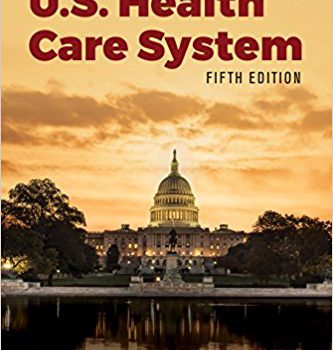

Much is said about the deplorable state of US healthcare: it costs 18% of GDP, shows low quality relative to comparable countries, and any major changes are high-friction and glacial in speed.
US healthcare is also incredibly complex, characterized by fragmentation; opposing incentives that are deeply entrenched; an opaque, inefficient market; and philosophical divides between people who believe in market justice vs social justice.
Essentials of the US Healthcare System, by Shi and Singh, is a useful high-level primer to the structure of US healthcare and the history behind its current state. This summary contains my takeaway notes from Essentials and open questions about US healthcare I’m still trying to answer.
This is part of a series on US healthcare as I try to find a problem tractable for a startup to work on. If you know of anyone working on interesting problems in healthcare or behavior change, please put them in touch!
Major Problems in US Healthcare
High costs
In 2013 in the USA, healthcare cost $2.9 trillion, 17.4% of GDP, or $9.3k per capita.
High, uncontrollably rising costs is the most commonly cited problem in US healthcare. Below are a collection of contributory issues in no particular order (currently unclear what % each contributes).
- Deemphasis on primary care, chronic care, and prevention vs specialist care and acute response
- Conception of healthcare as treating acute health (bringing from negative to neutral) rather than well being (neutral to positive)
- Lack of cost sharing by patient, provider leading to overconsumption
- High degree of fragmentation leading to inability to make major sweeping changes to system
- States regulate insurance, oversee providers and facilities, Medicaid, authorize local governments. Makes it hard to get national coordinated action
- Separation of providers vs payers (insurers) vs employers, and fragmentation within. No single party has the leverage to change the system.
- Public preference for minimizing government role to reduce bureaucracy, rationing, welfare dependence – prevents single payer system (federal control) common in other developed countries
- Technological imperative causes patients and providers to desire the cutting edge treatment, even if the cost-benefit tradeoff is not advantageous
- Increase in life expectancy, aging population
- Will cause future problems in funding Medicare
- Unnecessary wasteful care
- See: Gawande
- Not understanding root causes of patient non compliance (like taking pills only when feeling sick)
- Fixing immediate problem (high blood sugar fixed by insulin) rather than root cause (not taking meds)
- Treatment benefits not balanced by risks
- Patient anxiety over undertreated conditions leads to overtreatment. High alarm over turtle conditions that rarely materialize into actual threats (microcarcinoma)
- Automatic heuristic work ups rather than careful consideration of history
- Bias for one’s own practice (surgeon recommends surgery) and information asymmetry between doctor and patient causes useless care
- Uninsured tend to use ER instead of primary care
- High costs for acquisition, training, facilities; and moral hazard when covered by insurance
- Doctors who own equity in partners (home care agencies, imaging centers, local for profit hospital)
- Doctors being unaware of followup costs (home health costing 1k a month)
- Incentives around increasing procedures, not results (fee-for-service)
- Increase in life expectancy, aging population
- Will cause future problems in funding Medicare
- Tort potential and defensive medicine
- Administrative overhead from fragmentation of healthcare
- Waste, abuse, fraud
- Illegal immigration
Other problems
- Underperformance of US quality for spend
- Disparity in access to primary care
- Finding PCP for Medicaid is big hurdle
- Lack of emphasis on disease prevention
- Population heterogeneity through immigration?
- Disparity in access to primary care
- Fragmentation of care
- Difficult to coordinate between acute care, PCP, long-term care. Leads to redundant treatment (eg multiple X-rays) and lower quality
- Different EMRs are not cross-compatible
- Inefficient market
- Consumers cannot make fully informed decisions due to complexity of care. Have to trust providers (who have their own incentives) or payers
- Opaque costs to consumers – can’t decide cost-benefit analysis beforehand
- Consumers are not payers of service
- High barrier to entry for providers through regulation
- Federal subsidies to insurers (phased out starting in 2016)
Vicious cycles in US Healthcare
These are possible feedback loops that reinforce poor quality of high costs that will continue unless a large intervention is made. These are theoretical and not explicitly mentioned by the book.
- Incentives for procedures/visits (fee for service) causes automatic heuristic-based workups, even if it’s wasteful and doesn’t attack the root cause of the medical problem. This wasteful care leads to higher patient load, which depletes provider time to carefully consider root cause and further enforces automatic rapid workups.
- Poor insurance rates for youth may lead to worse health outcomes when old, leading to higher costs for Medicare, leading to underfunding insurance for youth
- Imposing more taxes to pay for medical care may lead to less national output, which requires more welfare for citizens, which may require more taxes.
Main Takeaways from Essentials of The US Healthcare System
- Cost, access, quality – 3 components to measure effectiveness of a health care system
- These are often conflicting. Increasing access to more patients will increase total costs. Forcibly decreasing cost may decrease quality or access.
- Cost is often the easiest political target since it’s a middle class, economic, market justice problem.
- Cost is a function of price x quantity. Price is easier because quantity risks backlash re: rationing
- Access is a lower class, liberal, social justice problem. Also, restricting access to high tech healthcare leads to claims of rationing.
- Quality is difficult to define and is in the eye of the beholder (patient vs provider vs payer have different conceptions of quality).
- People believe in either market justice (it’s not a right, you get what you can pay for like any other good) or social justice (it’s a right, everyone should get it regardless of ability to pay) for distribution of healthcare.
- Each side finds the other incomprehensible
- Determinants of individual health – lifestyle, environmental, heredity, medical access
- Brief history of US healthcare
- Healthcare began as unscientific and haphazard, practiced by barbers, clergy, and family members.
- After germ theory, antiseptics, X-rays, and anesthetics, medicine gained legitimacy
- Hospitals grew as legitimate care centers for complicated procedures and equipment that individual physicians couldn’t afford
- Healthcare became expensive, and unpredictable events could cause personal bankruptcy, leading to insurance plans.
- As technology improved, both consumers and providers obsessed over getting the cutting edge medical treatments (the “technological imperative”) and emphasis on specialization increases costs.
- Brief history of hospitals
- Started as almshouses/poorhouses run by local governments as social welfare more than medicine.
- Hospitals became community-owned institutions supported by private charitable donations, starting the dominant trend today of private nonprofit hospitals.
- As science improved and medicine gained legitimacy (anesthesia, germ theory, sterilization), people began paying out of pocket, and hospitals realized they could make profits.
- Hospitals became centers of research affiliated with universities.
- Pressures from payers (large MCOs) prompt hospitals to merge and form medical systems, providing a broad range of services.
- Employer-sponsored health insurance
- In the US, employer-sponsored health insurance arose as compensation in response to wage freezes by Congress in WW2. In 1948, employee benefits were ruled a legitimate part of union-management negotiations. In 1954, employer-paid health coverage became nontaxable.
- Fears over socialism prevented national health insurance from taking root despite several movements, while it succeeded in Germany and England in response to labor instability.
- The AMA has played a large role in health policy, protecting interests of doctors and (in retrospect) stifling national healthcare performance.
- Arguing for mandatory state licensure in early medical days
- Promoting physicians into independent private practice rather than salaried employees (thus growing incomes and providing leverage over hospitals through referrals)
- Opposed national healthcare in 1940s, seeing it as a threat to private practice. Ran campaigns linking national health insurance to communism
- Provider facts
- Healthcare is #1 employer in the USA at 13% of labor force, and expected to grow due to population growth, aging, and increased life expectancies.
- ⅓ of MDs and ½ of DOs are generalists.
- Non-physician practitioners (NPs, CNSs) help cover for PCP shortage, but are stifled by reliance on physicians (eg reimbursement goes to physicians with whom they practice)
- “Greatest need for new workers will be for RNs”
- A doctor shortage may exist because in 1997 Congress limited training of residents to 1996 levels
- (but increasing supply may increase healthcare costs further because of provider-induced demand)
- Financing determines supply and demand
- Hill-Burton Act in 1946 expanded hospital beds.
- In 1965, Lyndon Johnson’s Medicare and Medicaid led increase in costs through expansion of care and unchecked retrospective reimbursement
- These measures in term clamped down on rising costs:
- 1973 federal support for HMO creation
- 1983 prospective reimbursement with Social Security Amendments, instead of retrospective
- Managed care models for private insurance and Medicare/Medicaid
- PCP gatekeeper model for specialist referrals
- 1989 resource-based relative value scale – reimburses based on time, skill, intensity requires to provide a service
- But let the cat out of the bag and it’s hard to put back in – by this point many providers had been trained, many institutions created, leading to entrenchment and lobbying forces
- These measures in term clamped down on rising costs:
- When employer plans started offering dental, demand for dental services increased
- Providers organically expand to provide whatever else can be reimbursed (hospitals expand to outpatient clinics; skilled nursing facilities open subacute care units)
- States provide major share of cost for training providers
- Clash of incentives between major industry participants
- Providers want to be paid more for less work
- Consumers want low out of pocket costs, flexibility to choose providers, and low wait times
- Employers want low premium costs and higher satisfaction, leading to satisfaction with employer
- Insurers want to collect high premiums and pay lower costs over time
- Consolidation of payers and providers
- Consolidation of MCOs (allowing purchasing power at discounted prices) has led to consolidation in providers into group practices, hospitals, physician-hospital organizations, and corporations, out of both cost pressures seeking efficiencies and increasing bargaining power.
- Regulatory, billing, and IT demands now make it harder to run small physician practices.
- Types of care to keep in mind
- Outpatient, primary care
- Primary care shown to improve health outcomes, mortality, morbidity, lower costs [unclear the size of effect]
- Areas with higher density of PCPs show some better health metrics (mortality, obesity) and lower health costs, but unclear what causation is
- Hospitals
- Private hospitals are 19% of hospitals by count [unsure of by revenue]
- Critical access hospitals (eg rural areas) are still reimbursed in retrospective cost-plus
- ACA forbids new physician-owned hospitals after 2011
- Managed care spectrum
- The general tradeoff is between ownership of providers and utilization control VS consumer breadth of choice. So spectrum from staff model to group, network, IPA model
- Longterm care
- Range from informal care to community-based (home health, senior centers) to facilities (retirement, assisted living, nursing facilities). Include respite, hospice care.
- Nursing homes are mainly private for-profit
- Nursing homes are downward trend, replaced by community-based LTC
- $156 billion for nursing homes
- Outpatient, primary care
- Cost containment strategies
- Price controls
- Peer review of utilization and quality
- Demand-side incentives (consumer cost sharing)
- Supply-side regulation (suppress price fixing, anticompetitive M&A)
- Payer-driven price competition (competition between insurers)
- Utilization controls (only appropriate and necessary are provided)
- Half of healthcare financing comes from Medicare/Medicaid
- Special needs, vulnerabilities
- To think of determinants and points of intervention, go from broad society to individual – public policy (cigarette taxes) to community (parenting, education) to interpersonal (healthcare) to individual (genetic)
- Consider vulnerability as a combination of factors – predisposing (genetics, race, gender, rural), enabling (socioeconomic, homelessness, insurance), need (mental health, chronic illness)
- The more negative factors you have, the more difficult your situation and the more difficult to extricate
- Mental illness – 26% of US population with one mental disorder in any year, 22% of those facing severe mental illness
- Other nations “get a free ride” on US biomedical R&D
- Kaiser Permanente was started in 1942 by Henry Kaiser to provide healthcare for his 30k workers
- Cue Buffett/Bezos/Dimon plans to start their own healthcare system. Hope is probably to use their large collective workforces to gain bargaining power, then build a virtuous cycle to accrete more mass and gain further leverage to lower costs.
- A rising aging population will make future healthcare more expensive
- Process improvement
- Clinical practice guidelines
- Cost-efficiency – stop when benefit does not exceed cost
- Critical pathways – timeline for medical interventions with expected patient outcomes
- Risk management – avoid malpractice
- Policy
- Interest groups may need to form alliances. Legislators show work to constituencies; agencies expand programs; interest groups get benefits
- Reimbursement methods: previously fee for service, has migrated to bundled payments (includes capitation, diagnosis-related groups, resource utilization groups)
- ACA effects
- 15% to 12% uninsured
- Illegal to deny coverage for preexisting conditions
- Value-based payment to providers
- Some additional funding for residencies
- Disappointment among public about not being able to keep same plan, and with premiums/OOP costs increasing
- Maybe one contribution to a potential fall of the US in international standing comes with massive healthcare costs with an entitled populace who doesn’t want to endure rationing/austerity. China may be in position to control its health spend if its citizens have never known the privilege of on-demand specialist care, and the government can better align incentives around long-term health and cost reduction.
- Exciting technological frontiers
- Targeted customized therapy: Molecular medicine, personalized medicine
- Xenotransplantation, regenerative medicine
- Rational drug design
Ideas around Improving US Healthcare
Here are half-baked ideas, based on the major problems mentioned above.
- Incentives around cost savings, quality
- How to better incent better current health and long-term savings? Especially when consumers switch employers and thus insurers often.
- Government can create bug bounty like program – release open source claims data, and give bonuses to third parties to detect claims fraud
- Resolve root causes of patient noncompliance with medication
- Taking drugs only when they feel bad or blood sugar off
- Regular followup by phone, visit
- Medical cost calculator – given this insurance and the range of treatment options, how much do you pay out of pocket for what health benefit
- Problem: Hospital chargemasters are opaque
- Problem: Employer insurance doesn’t offer much choice for consumers to switch
- More accurate diagnosis based on patient history and data
- Insurance programs that refer to specific high-quality centers that bill by packages. Centers then have incentives to only operate when necessary and solve the patient’s core problem (eg pain) as cheaply as possible
- Eg Walmart spinal surgery example in Gawande post
- Service to help medical centers get certified as accountable care org
- Convince patients of benefit of not getting pointless care and avoiding technological imperative. How to capture some of the savings?
- Provide transparency around provider ownership of local care centers, publish data
- Fund alternative treatment research studies, get covered by health insurance. Better if proprietary to have moat
- More available primary care
- Tools for PCPs to coordinate care
- How to get PCPs to get paid more? If they can solve major health problems, they should be getting paid more for the value saved away from specialists
- Substitutes for PCPs – NPs?
- Scalable PCPs nationwide
- Telemedicine
- Barriers: licensing across state borders; legal liability; lack of reimbursement
- Telemedicine
- Remote care for rural populations with insufficient density to attract PCPs
- Make advance directives more popular to reduce needless care that patient actually doesn’t want
- If obesity and smoking are contagious, then price this into the benefit of someone losing weight
- Cost saving strategies (some of which are already in effect)
- Replacing earlier, more expensive procedures
- Minimally invasive procedures obviating overnight stays
- Shorten hospital stays
- Reducing inpatient psychiatric care
- Enable services to be rendered in outpatient and home care instead of hospitals
- Study cost-effectiveness of procedures more
- Limit reimbursement to providers
- Employ rationing
- Pay patients to take lower cost procedures
- Lower frictions to getting PCP access to help reduce emergency room visits
- How to provide long term care at lower prices, more scalably?
- Startups like Honor already doing this
- Datasets on provider quality to consider
- Physician quality reporting system (PQRS)
- Agency for Healthcare Research and Quality (AHRQ)
- Health cost institute
- Accurate assessment of medical risk to screen and prevent disease earlier
- Lifestyle, family history, genetics
- Relies on patients caring, which is already a tall ask
Open Questions
Here are open questions I’m researching. If you have any helpful resources on these topics or want to discuss, please contact me!
- How does insurance currently incent better health today through PCP visits, weight loss, drug compliance? Shouldn’t it be in their interest to reduce total healthcare costs due to avoidance of later specialty care?
- Counter-force: people switch employers and insurance plans too often for insurers to really care about long-term health of patients.
- How strong is the technological imperative in other countries? Do their citizens feel more complacent about not getting the specialist care they want on demand, with long wait times?
- Is there a greater feeling of social justice in these countries, where it’s OK for me to not get cutting-edge care so that others can also get baseline care?
- Among uninsured, what is the effect of giving health insurance on health outcomes?
- There are data showing poorer outcomes for uninsured vs insured, but this is not necessarily causative – it could be that the insured are better educated, more likely to be employed, care more about health.
- Are there randomized controlled trials showing that giving insurance to insured actually improves outcomes?
- The growth rate of health spending per capita seems to outpace the growth rate of GDP per capita in ALL developed countries, regardless of healthcare system (eg it’s 3.9%/0.9% for US vs 3.4%/0.5% for Norway).
- Aren’t single payer systems supposed to be better at controlling costs? Why aren’t they any better able to control increase in health costs than the US?
- It’s said that the US spending seems so high because other benefits provided in other countries aren’t calculated in their healthcare cost denominator (better welfare, social services). More data on this would be helpful.
- What is the process by which an insurer determines it will reimburse for something? How are the cost-benefit analyses done?
- Beyond the pure medical CBA, there’s also weighing in the cost of rationing treatment that may lead to public backlash and reputation loss.
- It was said in the book that 70% of all US healthcare costs are generated by 10% of patients – is this in a cohort of people (in all people born in 1950, 10% of patients consume 70% of cost?), or by current year (of all patients treated this year, 70% of costs are generated by 10% of patients)?
- The latter is less meaningful since people near end of life consume more healthcare.
- American consumers generally dislike the idea of rationed care and want to get any procedure on demand. But is the average person really sufficiently prepared to decide they need an MRI when provider consensus is that it’s unnecessary?






